
EXHIBITION
Bring your world outside
Trade shows, events, seminars, conventions, and art galleries become overwhelming experiences.
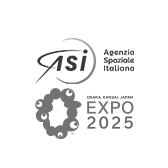
On the occasion of Expo Osaka 2025, the Italian Space Agency (ASI) aimed to showcase Italian excellence in the space sector within the Italy Pavilion. The goal was to create an immersive exhibit capable of engaging a diverse international audience by translating the complexity of aerospace research into an intuitive, exciting, and accessible experience. The focus: to communicate Italy’s role in the space economy, sustainability, and Earth observation, highlighting how space innovation has a tangible impact on everyday life.
The multimedia exhibit is inspired by the idea of a journey: a Digital Immersive Experience that spans the present and future of Italian space research. The aim is to turn visitors into explorers, guided by technology along a sensory and narrative path. The story unfolds through visual, auditory, and interactive content, showcasing 3D models of satellites, probes, and scientific payloads within a highly scenic and impactful setup inside the Italy Pavilion.
The Universe thus becomes within reach, thanks to a cutting-edge solution that merges art, science, and technology, perfectly integrated into the design vision of the Italy Pavilion, conceived as “a forest of connections.”
The immersive installation is the result of a perfect fusion of next-generation hardware solutions, skillfully integrated into the physical setup of the Italy Pavilion, combined with a custom-developed software platform based on the Unity graphics engine, and content creation designed, planned, and executed according to the principles of narrative accessibility and scalability.
The technological centerpiece of the installation is the 55” transparent multi-touch OLED Display, custom-built into the furnishings, appearing as an interactive glass surface that blends design with digital engagement.
In the background, a large 8K-resolution Led wall, measuring 3 meters wide by 1.68 meters high, delivers ultra-high-quality 3D content.
Through the custom-developed software platform, these two surfaces interact collaboratively, cross-referencing information and insights. The experience is further enhanced by the transparency of the OLED display reflecting the visuals on the LED wall, increasing the level of immersion.
From the joint efforts of our software developers and graphic designers came a custom-designed and developed software platform for this multimedia exhibit. It enables gestures, selections, and animations to synchronize perfectly, creating a sense of simultaneity that enhances the immersive experience.
The transparent OLED display functions as a true interactive console or HUD (Head-Up Display): users can navigate through wireframe modes of 3D models, explore first-person views, trigger animations, and access contextual data. Each selection is “projected” onto the LED wall with real-time rendering, making the experience engaging for the entire audience—even from a distance.
The system, built on the Unity graphics engine and an advanced pipeline with full Ray Tracing, is capable of managing complex 3D scenes (tens of millions of polygons) at 60 fps, simulating reflections, shadows, and materials with photographic realism.
During the design phase, content creation played a crucial role—both in developing the materials for the multimedia exhibit and in crafting the User Experience for the interactive storytelling.
The user interfaces were designed in close collaboration with A.S.I., following a distinctly scientific aesthetic to reflect the nature of the visualized content. At the same time, the user experience behind the navigation was conceived to be natural and intuitive: visitors can touch, explore, and select in a simple and linear way.
All the satellites featured—PRISMA, COSMO-SkyMed, and the MPH lunar module—were 3D modeled by our in-house team based on data provided by A.S.I.
Every textual content piece was developed in close partnership with the Client, to ensure both scientific accuracy and narrative accessibility.
The entire technological ecosystem was designed and engineered for intensive, continuous use, operating 24/7 throughout the duration of Expo Osaka 2025.
At the end of the installation—carried out with the direct involvement of Touchwindow technicians, who oversaw every phase of the work up to the final testing—training sessions were conducted for the technical staff appointed by Expo for the general maintenance of the pavilions.
At the same time, a technical support and remote monitoring program was launched by Touchwindow’s NOC, which manages and oversees the entire technological infrastructure through dynamic content updates, device performance monitoring, and rapid interventions in the event of malfunctions or anomalies.
All to ensure, seven days a week, the perfect functioning of the installed systems.
https://www.asi.it/2025/05/lasi-allexpo-2025-osaka/
https://www.italyexpo2025osaka.it/it/artworks/agenzia-spaziale-italiana

Trade shows, events, seminars, conventions, and art galleries become overwhelming experiences.
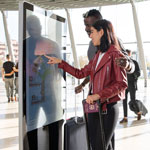
Offer advanced digital environments with which to bring citizens closer, open new spaces to interact with them, and provide innovative services.
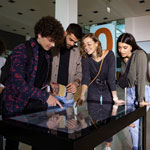
Solutions to attract visitors, entertain them and inform them through digital engagement.
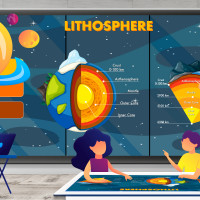
Discover our interactive and immersive solutions for the “Piano Scuola 4.0”, an important opportunity to make schools a participatory environment with engaging teaching methods and more learning opportunities for students.
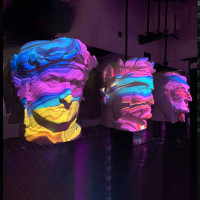
Ravenna’s Dante Museum becomes a place of time into time, where the modern interactive and multimedia aspects combine with prestigious historical artefacts of inestimable value.
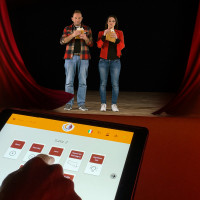
The museum celebrates the symbol of Romagna gastronomy through an immersive sensory journey made up of audiovisual systems, software applications and projections, which offers visitors an engaging and unique experience.